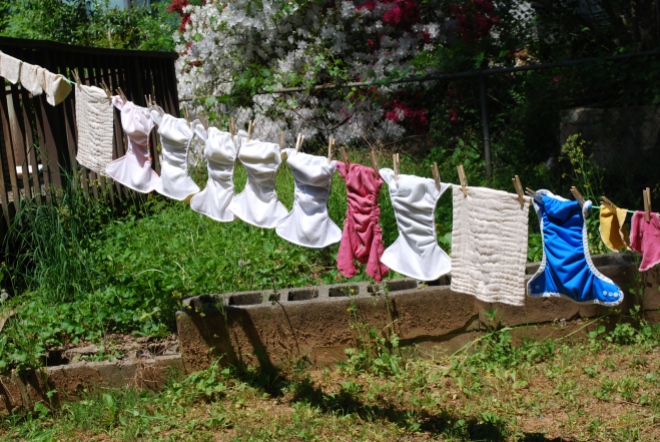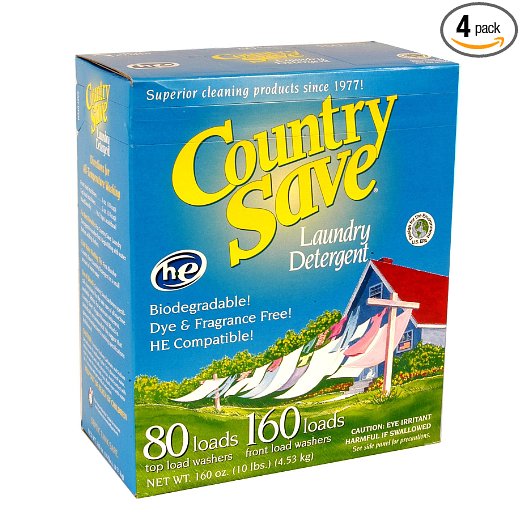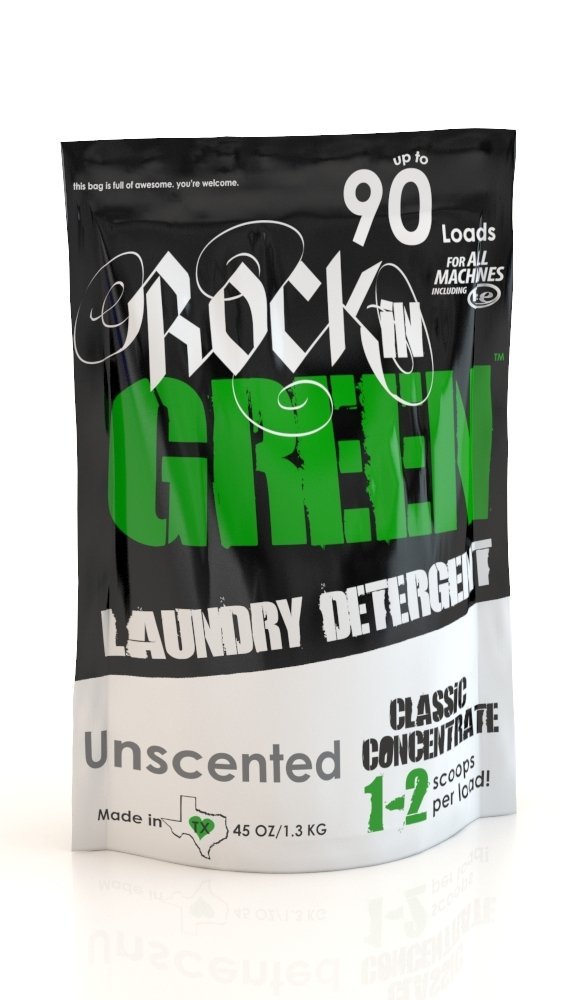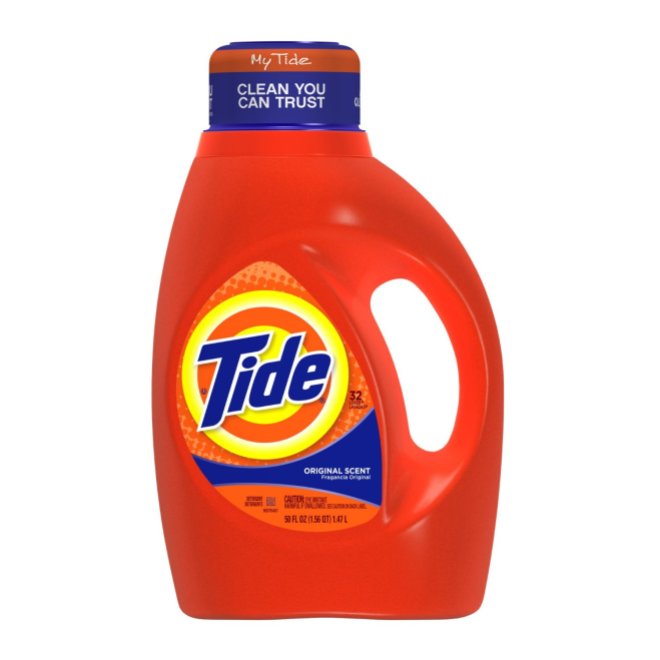Photo Credit: twentysixcats via Compfight cc
I originally started this post more than a year ago, but with Baby #3 coming along at the end of September, I’ve had diapers on the brain again.
This series is designed with new moms in mind, but it is also great if you are a mom who is new to cloth. Not everyone uses cloth diapers for every child.
I received an email from an old friend. She wanted help with choosing cloth diapers.
“There are tons of websites explaining the differences between the types of diapers, but I need details about how the process of cloth diapering actually works. I have no idea what items or diapers to register for, and how many I will need of each.”
So I thought a series of posts to address her questions was in order. We’ll begin with one of the most common questions I get:
How do you clean your cloth diapers?
This is a question with many possible answers. It comes down to 3 things: your water, your detergent and your machine. There are lists available of clean rinsing detergents that are preferable for cloth diapers. I used Purex Free Clear until we got a front loading washer. That worked beautifully for us. However, the new HE Purex Free & Clear at the time included optical brighteners which are better to avoided. (Basically they leave deposits in your diapers which reflect light and allow them to appear whiter than they actually are. Generally when it comes to diapers, you don’t want any kind of excess left in the fibers). However, we used Wegmans brand detergent for HE washers for a little while before I realized the enzymes were eating my daughter’s bottom alive. The blisters were awful. Now we use Country Save. It works well most of the time, though we still struggle with our hard water.
Photo Credit: Martha Schwer via Compfight cc
Top Loader
When I had a top loader my wash routine was:
Cold wash/ cold rinse, extra rinse; half recommended detergent for load size.
Hot wash/ warmest rinse available; half recommended detergent for load size
If your washer doesn’t have an extra rinse function add one more quick cycle
Warm wash /warmest rinse available extra rinse no detergent.
I miss my top loader for cleaning diapers. I always used the highest water level and cleaned the diapers efficiently. However, it was an old washer and used ton of water. We ultimately replaced it because it wasn’t spinning out properly.
Photo Credit: Peter Huys via Compfight cc
The Front Loader
The front loader routine for me was more complicated. You may have to play around with yours.
My current routine:
Rinse and spin high speed spin: I recently changed from cold to warm on the recommendations of some of the ladies on a local cloth diaper Facebook forum that I am part of. This rinse is mostly to get the yuck rinsed off.
Rinse and spin low speed cold/cold- this is to actually help saturate the diapers with more water so that they get cleaner during the wash cycle. I found this to be the easiest option that still works for us. Some people add water to their front loader or throw a soaking wet towel in instead.
Wash quick cycle cold/cold slow spin speed – 1-2 heaping TBSP of Country Save. I prefer using TBSPs rather than scoops so I know exactly how much I’m using. This is even more important if you are using a liquid detergent since it can be hard to measure and most detergent is very concentrated.
Super Wash, which is the longest available on my washer. 1 TBSP detergent. Hot/cold low spin speed.
Quick cycle warm/warm extra rinse – no detergent
If the diapers still smell iffy I’ll do another rinse. Sometimes I’ll just rinse my nighttime diapers as they tend to smell worse. (We use particular diapers for nighttime, so it’s easy to tell). I also take out covers and bags before the final rinse to avoid detergent residue which sometimes gets stuck on the bags.
Then I either run them through the dryer twice or hang them out to dry. Natural fibers are very stiff on the line so I prefer to hang dry part way and then use the dryer to finish them off to make them a little less rough. For microfiber, especially pocket diaper inserts, I love hanging them out in the sun. It makes everything smell fresher and I like that the sun will help to disinfect them.
Recommended Cloth Diaper Friendly Detergents
Country Save-I’ve used this for years, it’s inexpensive and does the job. But I do have to order it on Amazon and get a ton at once which is why I use it for my other wash as well.
Rockin Green. This has become the go-to cloth diaper detergent for many people. Personally I find it a little high priced and it’s known for not working well with very hard water, so I haven’t yet been tempted to try it.
Conventional Detergent that are known to work well
Regular Tide: This goes against many of the “rules” of cloth diapering but many people find that Tide works for them.
For a more extensive list see Cotton Babies handy info graphic.
Pinstripes and Polkadots has the most extensive information I’ve ever seen including detailed reviews for top loaders, front loaders, as well as a run down on detergent ingredients.
Keep in mind that detergent formulas are always changing. Read the labels for yourself to make sure you know what is in your detergent. I found that my whole family had fewer skin issues when we started using Country Save vs. even other free and clear detergents.
Trouble Shooting
If your diapers are leaking you are probably using too much detergent or the wrong kind of detergent.
If you diapers smell when they are still wet, or right out of the dryer, you probably aren’t using enough. If they smell when your child pees in them, you may be using not enough or too much or perhaps the wrong kind of detergent altogether. This is where you need to strip then and then play around with how much detergent to use. Good rule of thumb is to use half of whatever is recommended in a top loader, and ¼ of recommended in a front loader (unless your detergent is only recommended for front loaders, in which case ½ is probably fine. Many detergents now are saying that they can be used with either, they just recommend more for a top loader because of the low sudsing formula.)
What is Stripping? That is a whole other topic that we will cover in a different post. It’s an important topic when it comes back to cloth diapering so please come back and check it out.














Leave a Comment